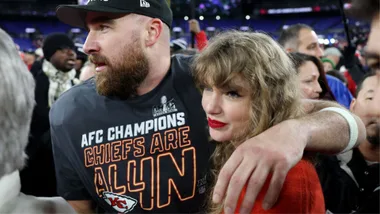Sarah Chapelle (@taylorswiftstyled on Instagram) is stressed. It’s Christmas Eve and the buzzing notifications from her phone are sending the 31-year-old Vancouver resident into a panic-fuelled dilemma. NFL Kansas Chiefs tight end Travis Kelce is scheduled to play on Christmas Day in Missouri, igniting a mass of tweets, posts, stitches and DMs over the possibility of a sighting of Taylor Swift, whom he is dating.
For Chapelle, the game-day timing means making the choice between marking the holidays with her family or scouring the internet for images and references to update her 240k Instagram followers on the fan account.
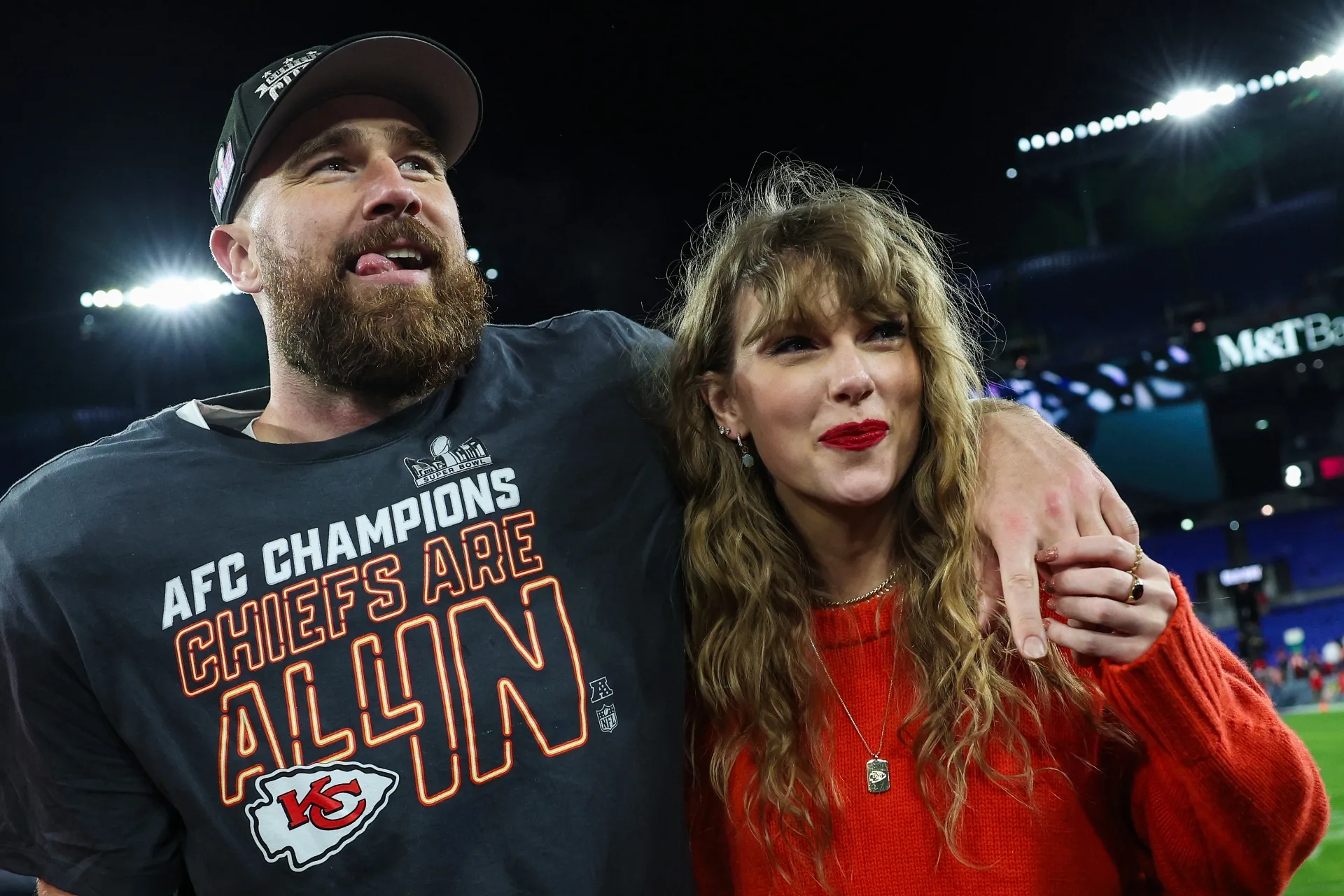
Not wanting to disappoint anyone, Chapelle consulted her dedicated community for advice. “Family time is more important, fashion can wait,” wrote one user. With the weight of the fandom behind her, Chapelle turned off her phone, letting her Swiftie universe temporarily fall silent.
“It can be hard to balance it at times. During a busy week I could spend up to 15-20 hours [on research and updates],” says Chapelle, a marketing professional who has been running the Taylor Swift Style website and socials for more than a decade. “It’s definitely a balance making sure I’m on top of things. The level of thought and care that goes into it takes time. I’m not just posting where Taylor’s purse is from but also how that designer contributes to her fashion lexicon.”

Chapelle and her contemporaries know all too well how frequently the general public misinterpret Swift’s fandom as hysterical or juvenile, words every Swiftie has had cruelly hurled
at them in internet comments, classrooms and workplaces.
To disregard or belittle the importance of fan culture both devalues women’s interests and ignores the powerful economic and cultural forces fandoms drive. Last year, Fortune magazine reported that fans spent an average of $US1300 on tickets, travel, and clothes to attend the Eras concerts in Chicago, predicting that the sold-out shows could generate $US4.6 billion in the US economy where consumers were tightening their belts.
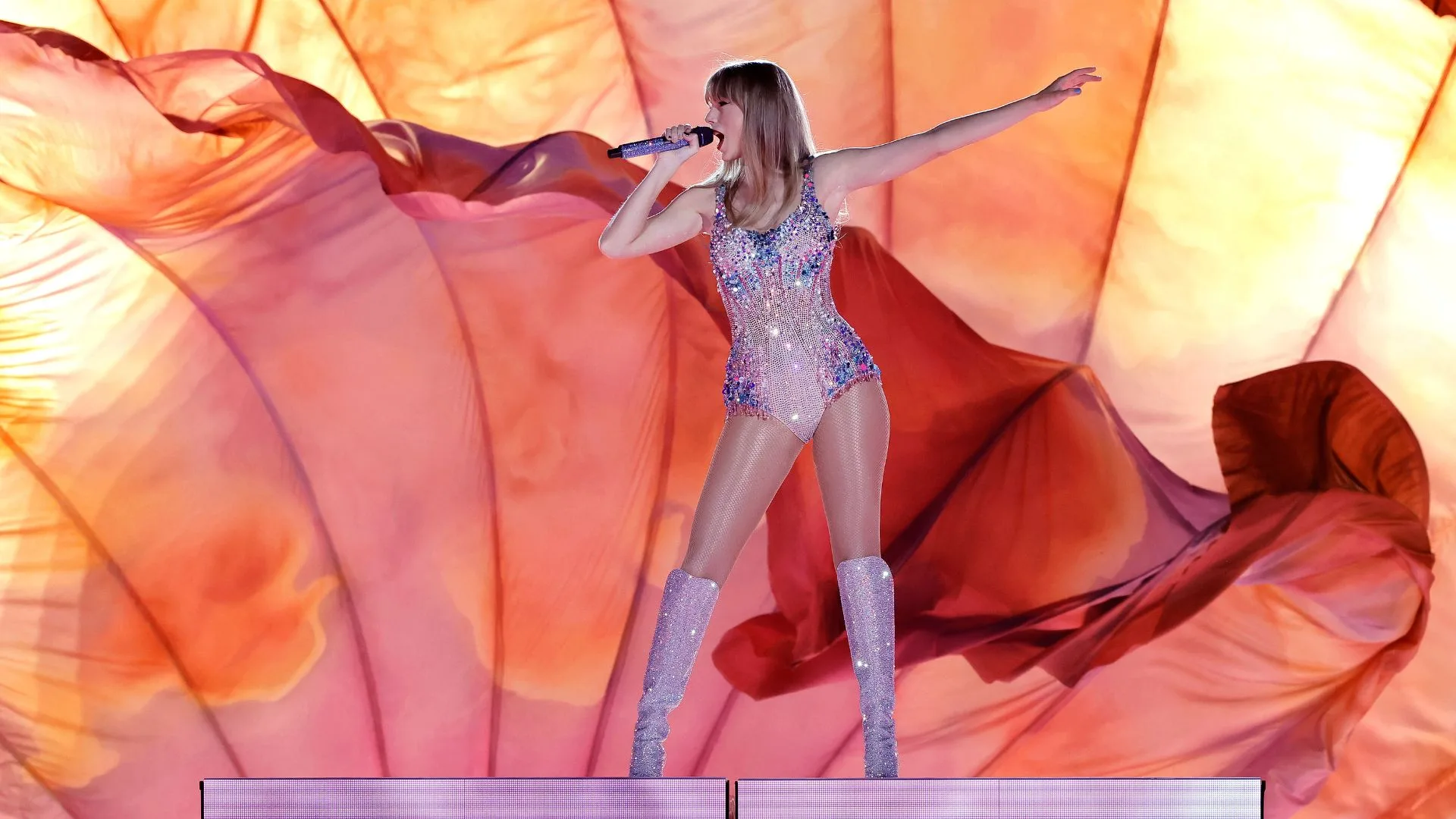
In Australia, the Taylor effect is expected to generate $140m over her seven Sydney and Melbourne shows this year. Despite this windfall, “Fan culture has always been really seen as obsessive, hysterical, overly emotional or irrational,” explains Dr Eloise Faichney, a university lecturer and chair of Swiftposium, an academic conference on Taylor Swift held in Melbourne in February.
“Pop culture, particularly feminine pop culture, is seen as low culture – it’s not seen as high art. It’s interesting because there’s a real bias and systematic devaluation of femininity. Meanwhile, the consumptive power of young women and their tastes actually defines what pop culture is. It’s really ironic. With sports, we see this arena where men particularly are able to be emotional and express themselves and it’s very accepted for that to happen. But when we see young women do it they are mocked and derided. When you compare the behaviour between the two it’s no different, it’s just what is valued socially.”
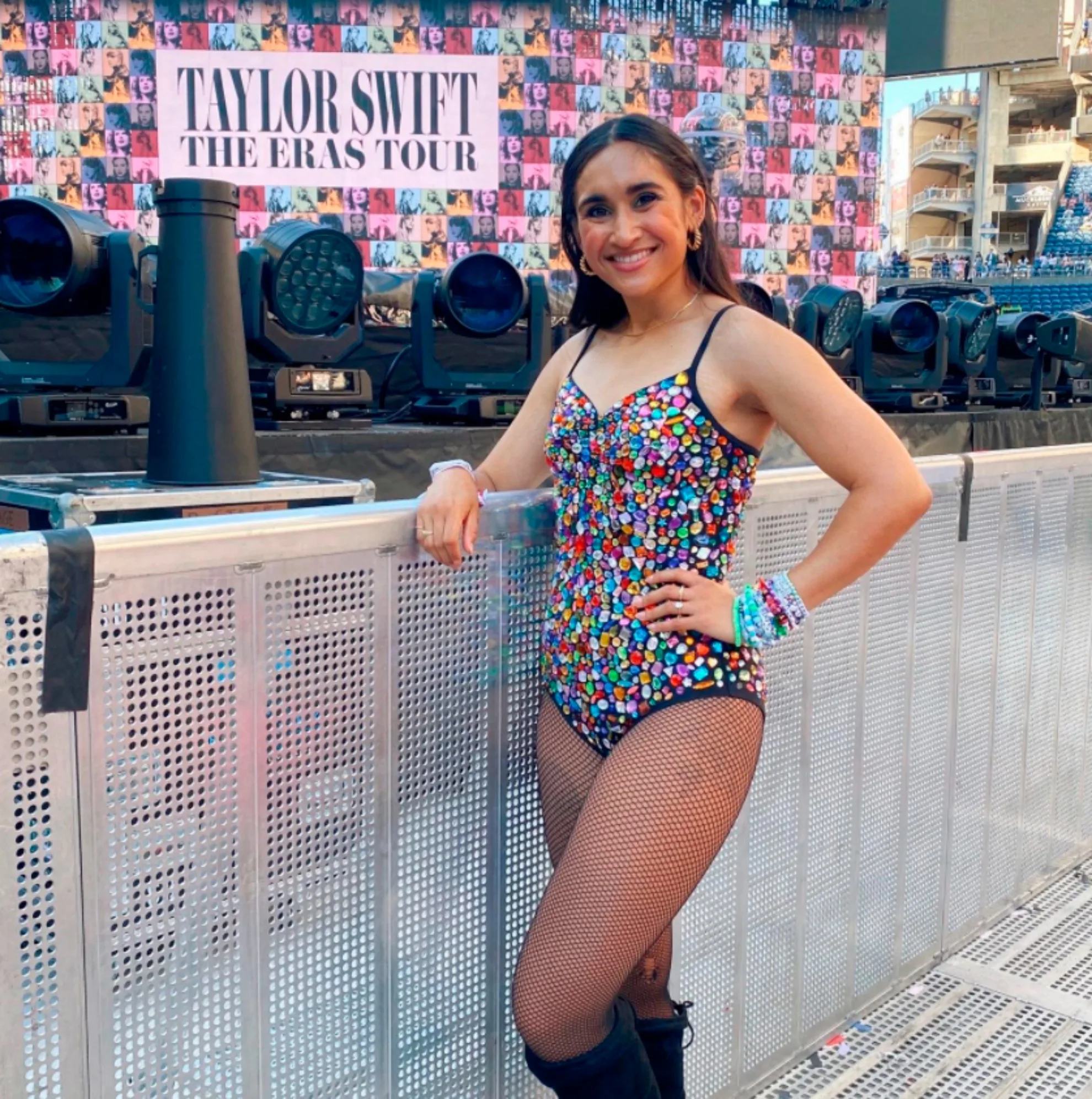
For 32-year-old Sydney-based writer and long-time Swiftie Jemima Skelley, judgement and ridicule simply come with the territory of being a self-proclaimed mega-fan. After attending eight Eras shows in the US and holding tickets to all four nights in Sydney, Skelley is used to raised eyebrows about the financial implications of her passion.
“Every time I tell people that I went to that many shows, they’ll say, ‘Whoa, is it worth spending that much money on?’ or ‘I would never do something like that.’ It’s funny because I might have paid a couple hundred dollars for a ticket, but if you spent that at the pub on the weekend no-one’s questioning it,” says Skelley. “If you find something that makes you happy and genuinely brings you joy, why is it anybody else’s business what you choose to spend your money on?”

For Skelley, celebrating her passion isn’t just about attending multiple shows but the life-long friendships she has formed through the fandom. “I have so many friends from around the world that I met through my love of Taylor. We could talk for hours because we’ve got this shared interest,” she says.
It was this shared unity that helped Skelley endure a 48-hour queue on the drizzly streets of New York to see Swift perform on Saturday Night Live. “It was cold. It got down to five degrees every night. Everyone else was so prepared, they had tents and umbrellas so I was freezing. Even though I was underprepared, everyone in the line was just having such a good time that waiting was as much fun as seeing Taylor film SNL. I never second- guessed my decision,” recalls the Swifie, who at one point sought warmth from a subway vent emitting warm air.
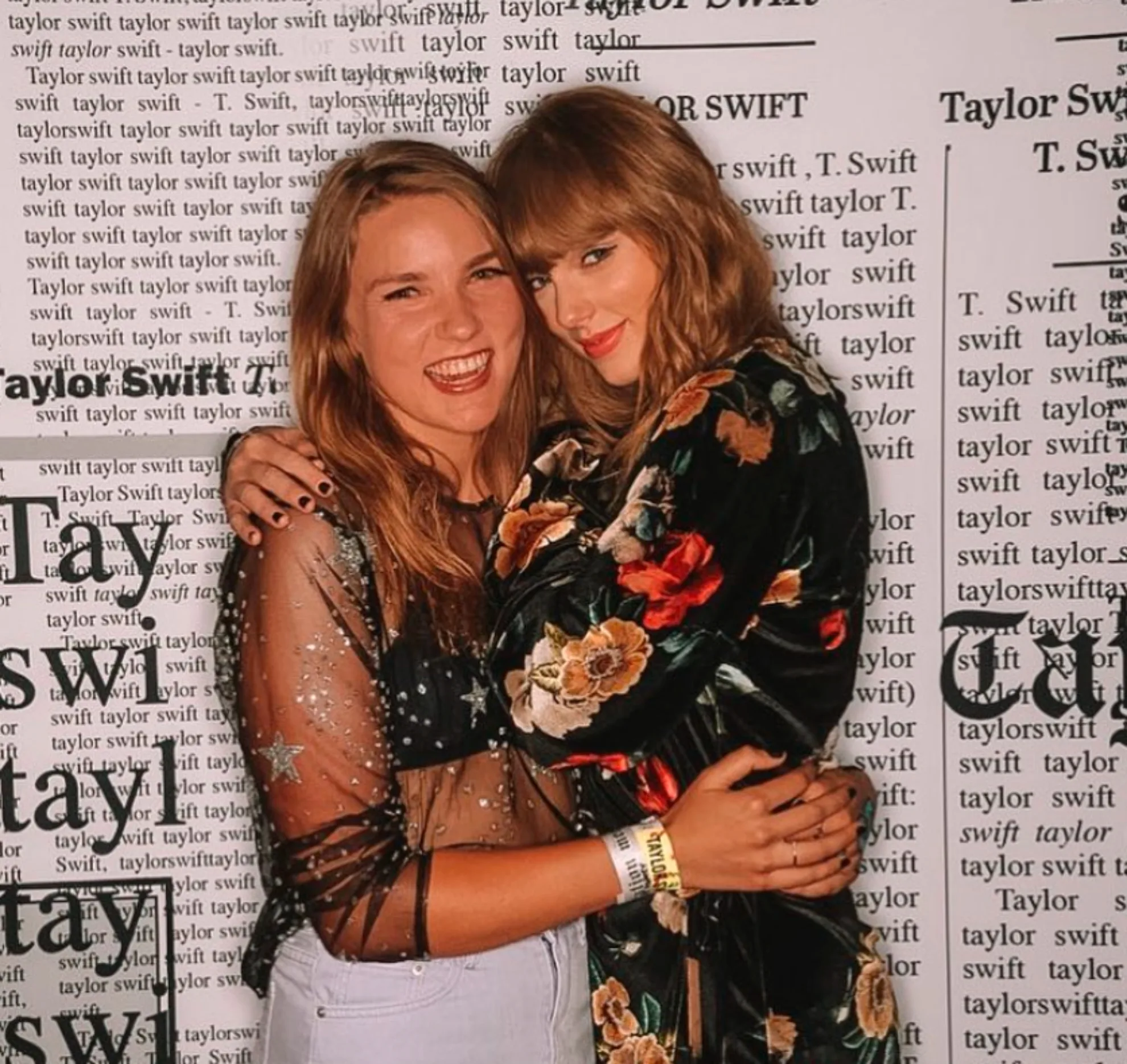
Whether you’re a dedicated Swiftie or a casual fan, the line between the two camps blurred in June when ticket sales for the Australian leg of the Eras tour opened and the topic of Taylor was on everyone’s mind. Workplaces and classrooms across the country transformed into multi-screen ticket- purchasing hubs with Do Not Disturb signs pinned to the back of chairs.
Overwhelmed by the information surrounding ticket sales online, Sydney university student Sidney created an Instagram account, @erastour- australia, to help out fellow Swifties with their ticket-buying journey. “It was super stressful because I was trying to get tickets for myself at the same time,” says Sidney. “I was posting frantic Instagram stories with updates and at one point I had 400 message requests of people telling me that they just got tickets. It was crazy. Fortunately, I managed to get my own tickets, too. I waited from 10am until 6pm and bought a VIP ticket, which was way over my budget,” she says.
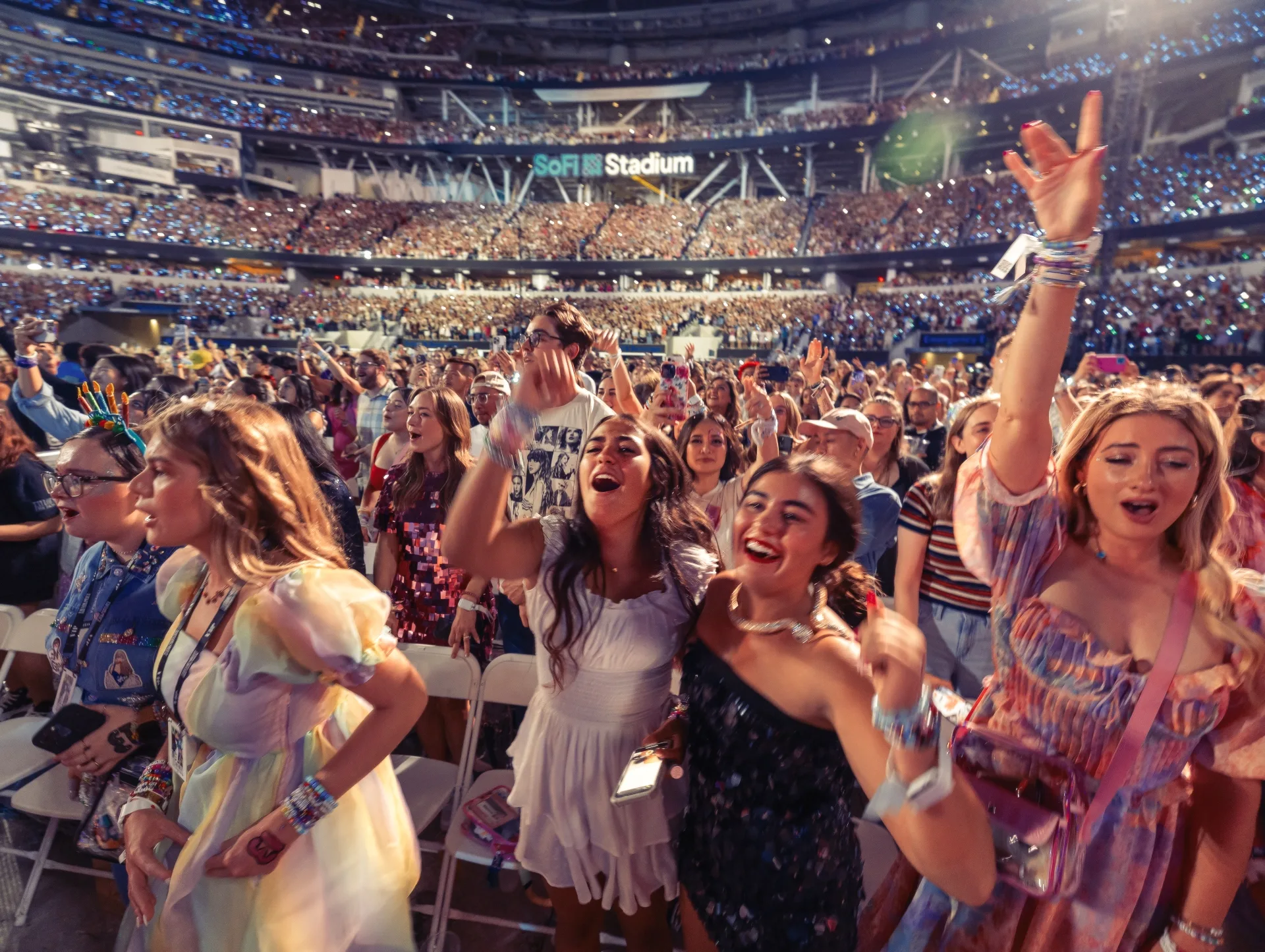
For sales professional Ainsley Burwell, 28, running the Brisbane- based fan account @swifties.australia during peak Taylor-mania became a full-time job. “We had a few posts that went viral on TikTok. One of my friends messaged me that our post had been picked up by [pop culture website] Pedestrian and then it kept receiving more and more media traction. It can be tough to balance making sure that people have the information. I work full time, so in between work I try to get in as many updates as I can.”

While Taylor’s tours might be powering the economy, her merchandise has also generated healthy retirement funds for big collectors, thanks to a lucrative resale market. “I am currently in the process of insuring my merchandise collection,” says American Swiftie Molly Swindall.
“I have crazy valuable pieces in there, which it’s insane because a lot of them cost under $50 at the time and now they’re worth hundreds, if not thousands of dollars,” says the 30-year-old, whose collection includes more than 140 vinyl records, signed posters, clothing, snow globes and mugs, all tightly guarded with a security cameras and a fingerprint lock.
Before the Eras tour, “you could get just about any piece of her merch, even the most rare pieces, for less than $250. Some of those pieces are now going for $2500. In the past month items have jumped by $500 in the span of two days. If I ever really needed the money one day, I think this would be amazing to have my collection to be able to fall back on.”
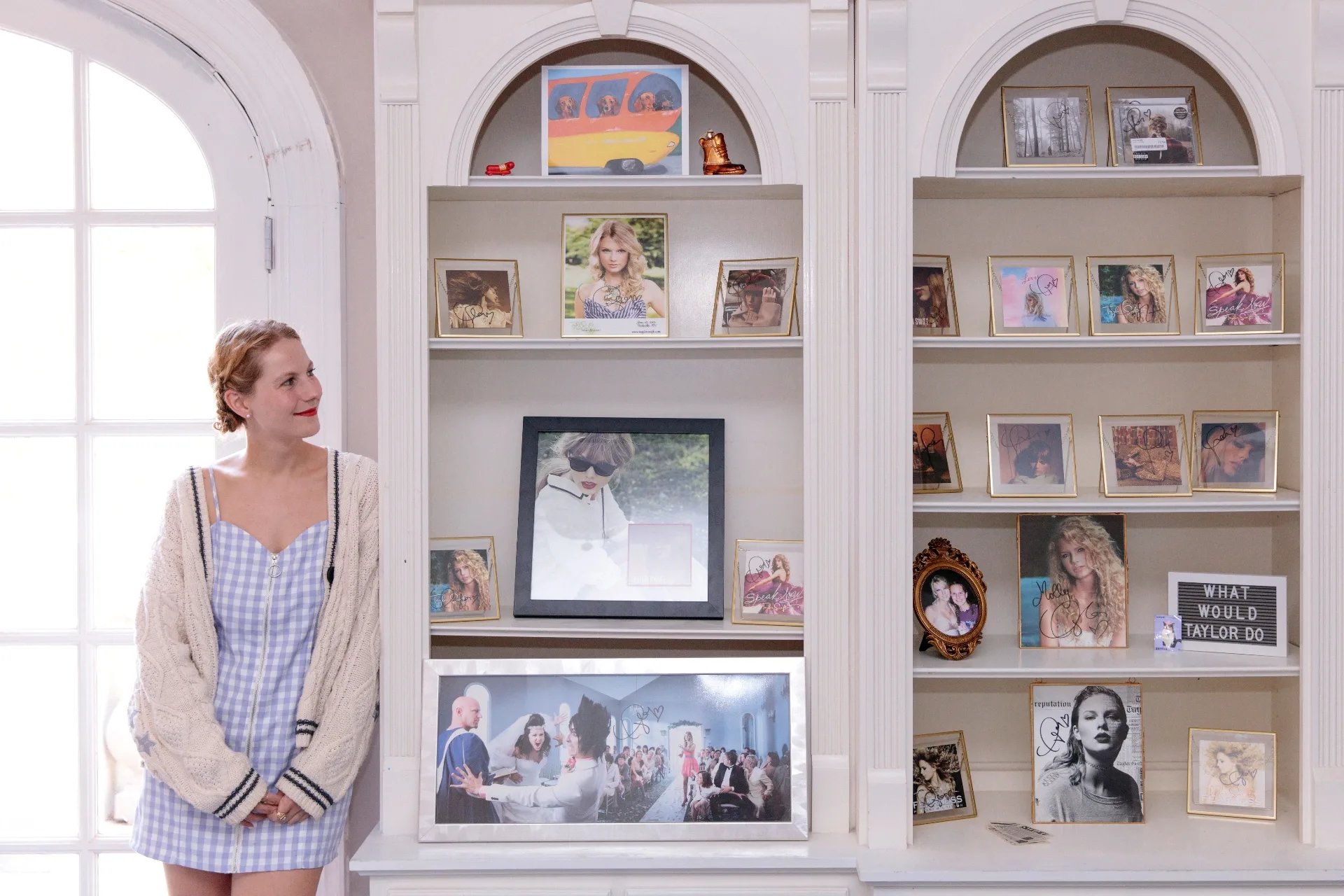
Despite the highly coveted collection, Swindall says sexist and belittling comments are rife in her feed. “Anytime I show my merch online, I get, ‘You’re crazy, Taylor doesn’t know who you are’; ‘This is so parasocial’; ‘Why are you wasting your money?’
Basically, women shouldn’t have passions is how I interpret it,” says Swindall, who works in aviation and commercial real estate. “It’s funny because I can’t tell you how many friends’ homes I’ve gone into growing up where their dad will have framed jerseys and signed helmets on the wall, but it was never considered weird, it was considered cool and smart. But the second you display Taylor merch it’s ‘creepy’ and ‘strange.’ I think people are intimidated by Swifties because we are so comfortable in our own skin and vocal about our love of Taylor.”

Instead, Swindall chooses to live unapologetically, wearing her Taylor tees and signature cardigans with pride. “I would probably wear one of my shirts or sweatshirts four to five days out of the week. Every time I travel I always make sure I have at least one or two pieces of merch with me as well as her CDs in case I run into her so she can sign it.”
There’s a theory, popularised in an interview with singer and former boyfriend of Swift Harry Styles, that if you want to know what’s cool and where you should be pointing your attention, simply ask a teenage girl. And though Taylor’s fans come in all ages, genders and backgrounds, it’s impossible to deny that the 4 million fans who have already attended her Eras tour are onto something big.

“Popular culture is so important, it shapes people’s emotional lives, their ideas,” says Dr Jennifer Beckett, a lecturer and comms director of the Swiftposium. “The poetics of Taylor’s lyrics hold something, particularly for young women. It speaks to them being able to narrate their own lives, examine their own heartbreaks and all the things that are up against them in society,” says Beckett. “Taylor really is mirroring a lot of really important things back at us.”
Taylor’s ability to showcase the strength in femininity is also acknowledged by Sarah Chapelle, ever since she first heard the singer’s hypnotic vocals and reflective lyrics more than 18 years ago. “What resonated with me when I started listening to Taylor was her ability to explore and validate the highly feminine experience of what it means to be a young woman. Taylor validates the small, personal moments that we often disregard as being too niche or unimportant by writing about them. That’s one of her greatest talents,” says Chapelle, whose book Taylor Swift Style: Fashion through the Eras will be published later this year.

Call it divine timing or the well- oiled gears of Swift’s slick PR machine, but the Eras tour marked a systemic shift for women. For those disheartened by the bleak political, economic and environmental landscape, the arrival of Taylor’s tour at the start of last year provided space for women to turn inwards and embrace a long-severed connection with girlhood.
What followed was a rekindling of femininity, from Barbie mania to the rise of the soft-feminine coquette aesthetic on the runway. “After seeing amazing female-driven projects that centre on women and women’s success, it’s been interesting to see the conversation slowly begin to turn,” says Chapelle. “I’m starting to see a change in tone and how people talk about women and women’s interests in women-led projects and things. That’s been really cool to see over my lifetime.”
While there’s still scepticism around the internet-coined “girl-math”, if the current female-fired economy is anything to go by, Taylor Swift – and Swifties – are on the money.

